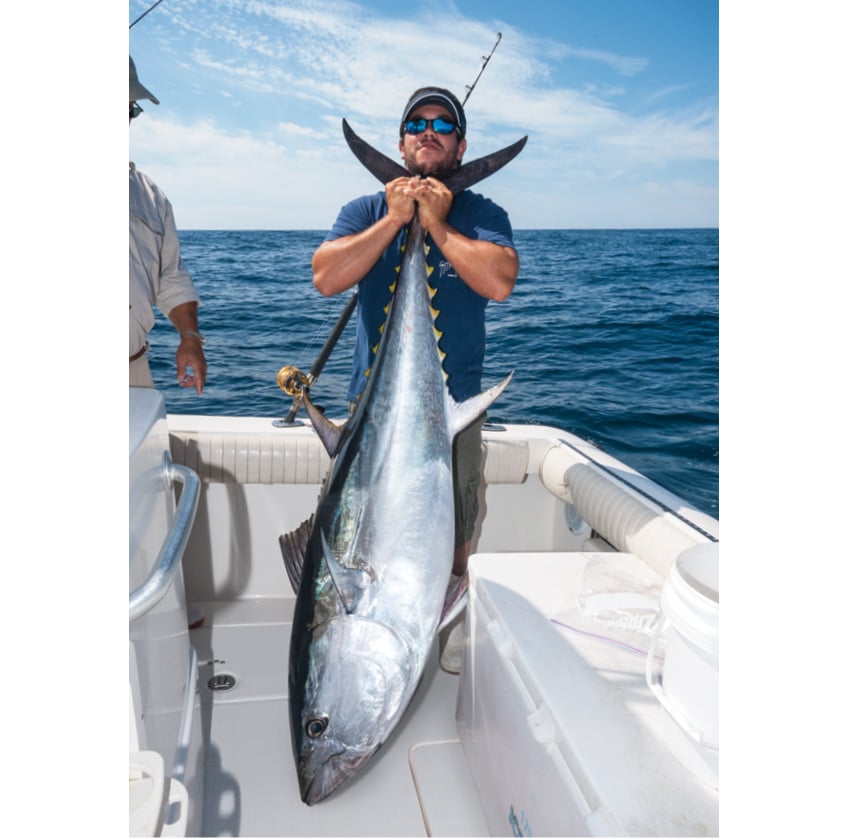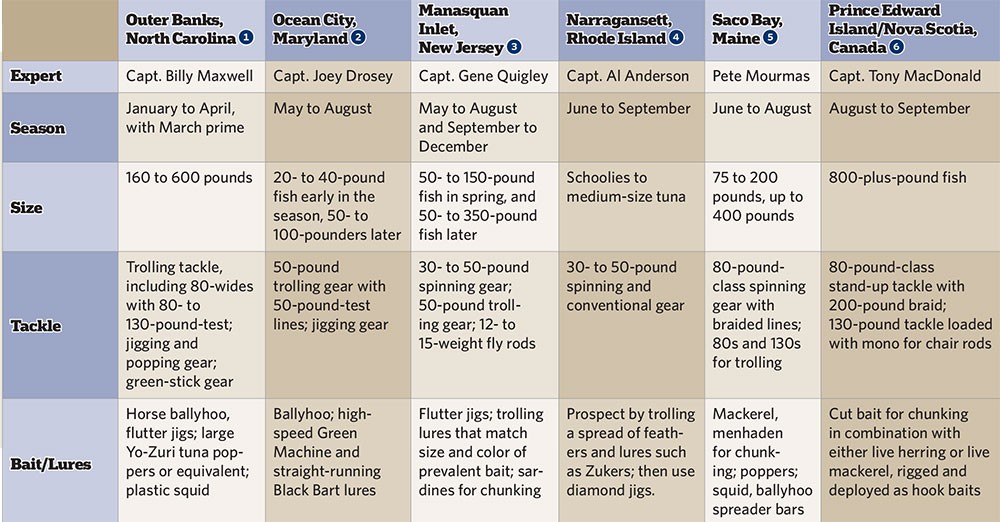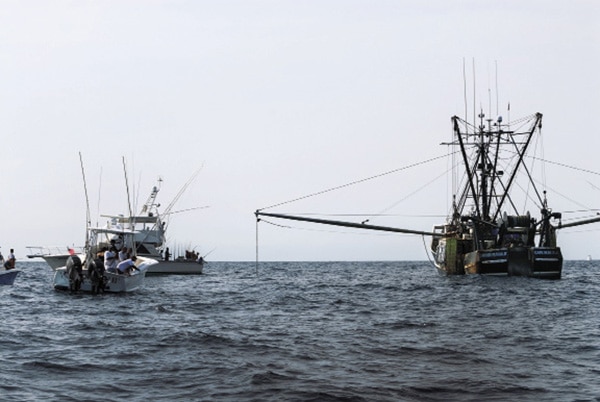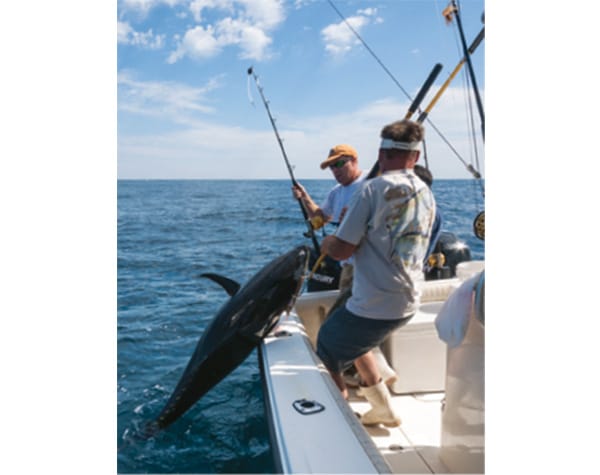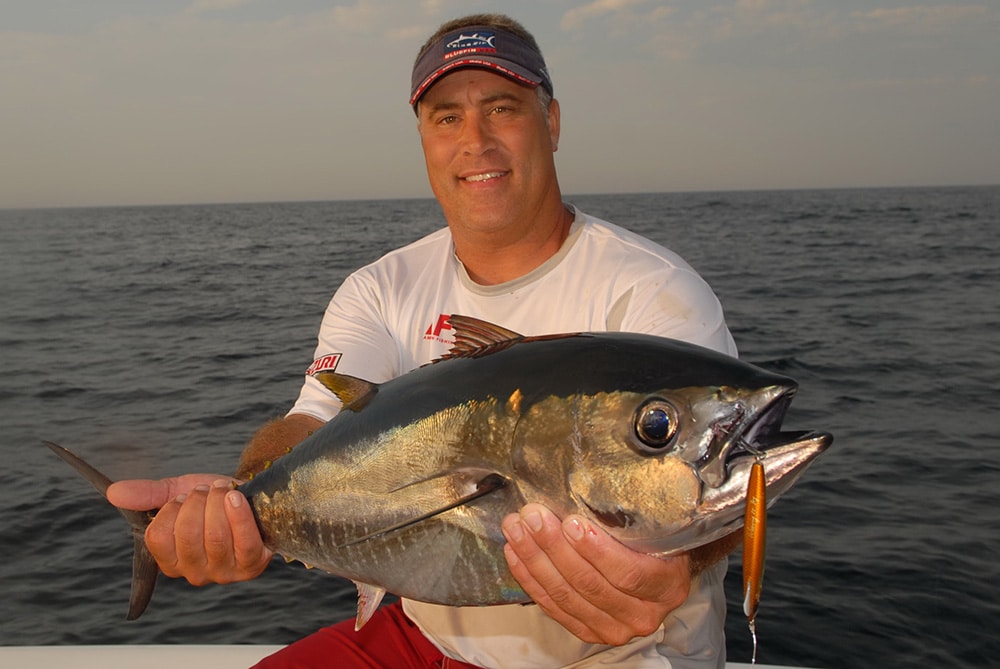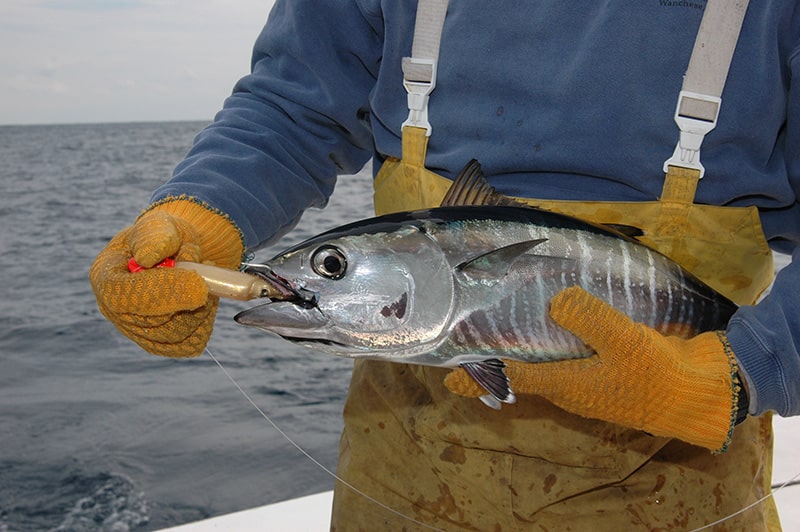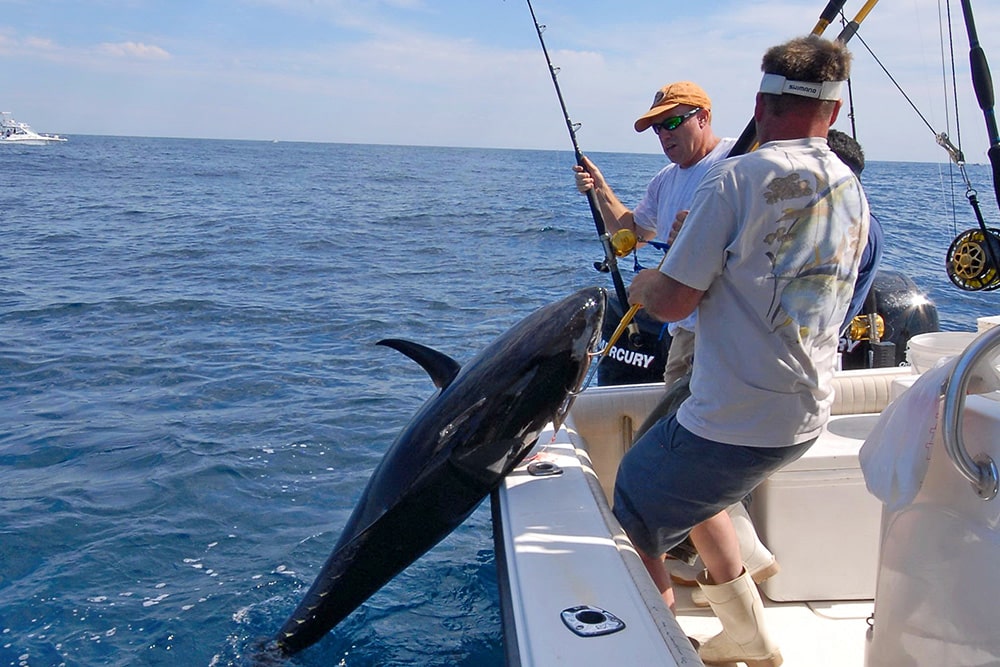
bluefin tuna opener
Few fish fight with the speed, strength and stamina of bluefin tuna. Hook one and fishing will never be the same for you. Considered by many as the ultimate big-game challenge, they’re a force of nature that puts angler and tackle to the test each time you set the hook. The Western Atlantic from Cape Hatteras north to the Gulf of St. Lawrence is their primary stomping ground, where anglers can follow their wanderings up and down the coast through the seasons, encountering specimens from 15 pounds to more than 1,000. From light-tackle delight to unlimited heavy-tackle brawl, if you want to earn your saltwater-fishing stripes, you have to throw down and hook up with a bluefin.
Carolina Opener
The first major concentrations of bluefin show up off the Outer Banks each winter. Capt. Billy Maxwell of Tuna Fever (tunafever.com) tells us about this incredible fishery.
“The bluefin have been thick the past few years with schools stretching for miles along ocean color changes,” says Maxwell. “These fish range from 60 to 100 inches (130 to 600 pounds) and usually start arriving in late December. Early efforts are centered on filling the commercial quota. It’s important to the livelihoods of many of the captains here, so March is prime time for charters or fishing your own boat.”
When we spoke, Maxwell had completed a stretch of trips that tallied 43 bluefin from 250 to 450 pounds in a 13-day period. He starts each day trolling horse ballyhoo on 80-wides until he locates the fish. Then he switches to jigs, poppers or chunking.
“I’ve had four on at once trolling,” Maxwell says. “If I put out the green stick, we can get these massive tuna jumping out of the water at the plastic squids. How can anyone not be happy catching this caliber of fish?” Come April, the tuna schools dissipate — some headed north, others east. Such are the vagaries of bluefin tuna migration patterns.
Ocean City Blues
The area from Wachapreague, maryland to Cape May, new jersey sees an influx of bluefins that can take up summer residence or move through. Capt. Joey Drosey runs Osprey (rhondasosprey.com) out of Ocean City, Maryland, and has 30 years of experience tuna fishing in this area.
“We typically encounter school fish along offshore temperature breaks in late May,” Drosey reports. “These are 20- to 40-pound fish. The larger fish show inshore a little later, starting with spots like 21 and 26 Mile Hills off Wachapreague, then move north. These are typically 50- to 100-pound fish, but we get some larger too.”
Early fishing is trolling with lures and ballyhoo, but once the fish settle in along the 30-fathom spots, chunking and jigging come into play. “When the commercial scallop boats were working this area, bluefin would stay for months,” Drosey says. “They’re chunking machines, and the tuna are never far from them. More recently, they’ve been working farther north, so our fishery consists of a shot in spring and early summer. But if the lumps aren’t holding a lot of bait, they move north. Last year, I had some excellent catches of fish to 150 pounds in fall trolling the Hot Dog.” Each year is different, but the region has the potential to produce great bluefin fishing, and anglers from Virginia to Cape May benefit when that happens.
Jersey’s Got ‘Em
Capt. Gene Quigley (shorecatch.com) has gained a reputation for his bluefin exploits out of Manasquan Inlet, and with good reason.
“It starts when I know the makos are around,” Quigley says. “They are hot on the heels of the schoolies. Last year my first trip was on May 21, and we caught 32 on the troll. Lure size and colors change with the bait — squid last year, sand eels the year before.”
Quigley frequently runs across acres of schoolies early, so stick baits and poppers produce. As the fish settle in around the Glory Hole and Chicken Canyon, he trolls, but jigging also turns on. “When I see a pronounced thermocline, trolling becomes a first-light affair,” he says. “The fish feed deeper during the day on sand eels, so we switch to jigging and chunking with sardines.”
Quigley fishes with a lot of fly rodders, “and they get shots at bluefin all season long,” he says. “Early season on the surface, later at first light with sinking lines, and in fall I chum with live bait. I’ve even developed a bait-and-switch technique that’s a lot like sailfishing in Central America.”
Last year there was a short-lived bite of giants in the Mud Hole and a December bite of big fish in Hudson Canyon, but for your best shot, think Lobster Claw to Chicken Canyon starting late May, and then track how the season develops. If there are scallop boats working, you can bet bluefins are nearby.
**
The Rhoddy Tagger**
No article on bluefin is complete without Capt. Al Anderson of Prowler (prowlerchartersri.com) out of Narragansett. He’s tagged thousands and spent years studying their wanderings.
“Bluefin migration patterns are fixed in their genetic memory,” Anderson says. “I fish from south of Montauk, New York, north to Block Island, and typically see schoolies to mediums but in different areas. Small bluefin can’t thermoregulate as well as the large ones, which prevents them from moving into areas like the Dumping Grounds, where cold water pushes down from the north. We start catching bigger tuna there in June, although they go farther north through the summer months.”
Anderson tracks ocean temperatures to find productive areas, and then starts his hunt for birds or bait concentrations with a trolling spread behind the boat. “September is prime time for light-tackle schoolies in this area,” he says. “When we find them, we can catch a hundred fish a day using diamond jigs. It’s great fun, and it helps with the tagging programs too.” Anderson has had amazing tagged bluefin recaptures from places like the Mediterranean off Turkey, the Bay of Biscay and Corsica.
Maine Attraction
Saco Bay Tackle has been home to hard-core tuna guys for decades. Owner Pete Mourmas explains how the fishery has changed over the years. “Twenty-five years ago, we trolled heavy spreader bars, and all the fish were big,” he reminisces. “But in recent years, we’ve seen more smaller fish and fewer true giants.”
The first place to catch them is on Stellwagen in June trolling for 75- to 200-pound fish. If they push into Cape Cod Bay, poppers and spinning tackle are deadly. Then they move to Jeffreys Ledge and spots in southern Maine like Pollock Hub, the Tampa Grounds and Sagadahoc Ledges. In July and August, you can hook a lot of fish chumming, day or night. “Our big fish are 400 pounds,” says Mourmas, but the true giants move through farther offshore into Canadian waters.
Land of the Giants
If catching a giant is on your bucket list, go directly to the Gulf of St. Lawrence between Prince Edward Island and Nova Scotia in August or September. I fished aboard one of the boats in Capt. Tony MacDonald’s specialized charter fleet (tonystunafishing.com) out of PEI, and we didn’t hook one much under 800 pounds in three days’ fishing.
“We start seeing the bluefins in June,” says MacDonald. “That’s before the season opens, but the best fishing is August through September, when the herring start to school up. Last year, we had fish in excess of 1,200 pounds chunking with herring or live mackerel as hook baits.” Tuna charter boats run out of PEI and Nova Scotia, and frequently fish the same grounds between the islands, giving you your best shot at hooking a giant bluefin.
